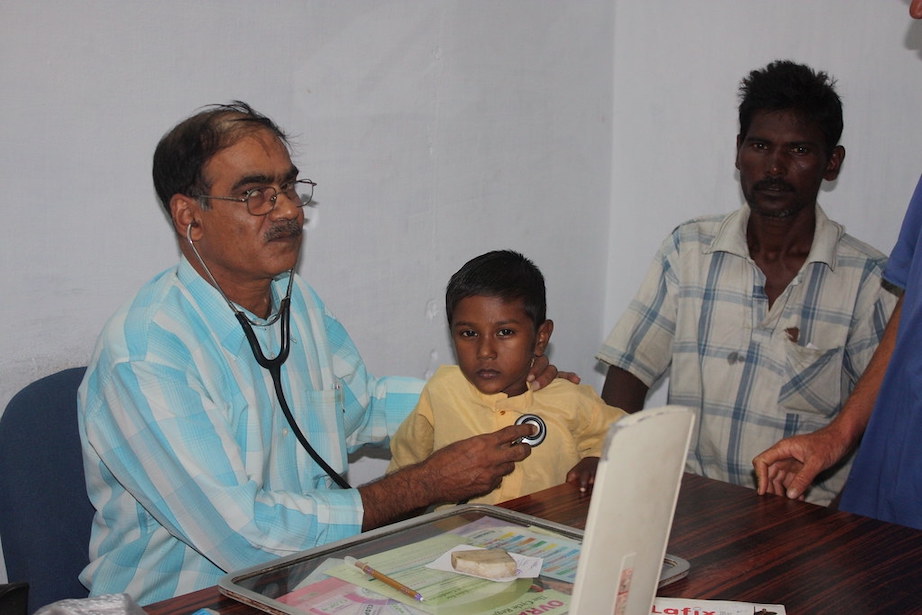In the last 74 years, India has emerged as a global player, elevating itself as a noticeable economy growing in terms of both intellect and business opportunities across sectors. Setting new milestones of growth over the decade, India has made significant progress in various spheres like the economy, like healthcare, education, space, and technology, among others.
In terms of public healthcare also, India has come a long way, from launching national-level and ambitious initiatives to reducing and controlling some of the deadly diseases, undertaking one of the largest COVID Vaccine production and distribution across the country and leveraging emerging tech for creating nationwide health database to evolving into a notable medical tourism hub. Some of the core health indicators then and now tell us the journey we as a country have made so far:
-
Average life expectancy increased from 33 years to 70 years
-
Infant mortality rate dropped from ~200 per 1000 to 27 per 1000
-
Maternal mortality rate came down from 2000 per 100,000 to ~100 per 100,000
-
Institutional births saw an increase from 39% to 89%,
-
Eradication of smallpox and polio stood out as the single greatest achievement of India as a free country,
-
Number of Doctors increased from ~60,000 in the 1950s to ~18 lakhs (~13 lakhs allopathic and ~5 lakh AYUSH doctors).
-
Nurses increased from 16,500 to 35 lakhs during the same period, and
-
Nearly 13 lakh ASHA workers connect communities to primary health care services across rural India
In addition to this, since 1947, the government has launched various policies and schemes to improve healthcare facilities in the country, prominent among them include the National Health Mission (NHM) and National Rural Health Mission (NRHM) to improve child and maternal health. In 2018, a centrally sponsored Ayushman Bharat Pradhan Mantri Jan Arogya Yojana (AB PM-JAY) was launched which is the largest Government funded health assurance/insurance scheme in the world.
In spite of these developments, a lot more work still needs to be done, especially in the public healthcare infrastructure in rural India. Currently, the rural healthcare infrastructure is a three-tiered network comprising of a sub-center, primary health center (PHC) and community health center (CHC).
The qqualitative and quantitative provisions for health in rural areas in India are far lesser than what the World Health Organization (WHO) defines as the minimum norm. As per Rural Health Statistics 2018, there is a shortfall of 18% for Sub-centers, 22% for Primary Health Centers and 30% for Community Health Centers. What makes this worse is the inaccessibility of these PHCs and CHCs. In some cases, these centers are quite far from the villages because of which people often turn to unregistered private healthcare practitioners to save time and energy. Additionally, there is one government doctor for every 10,189 people (the World Health Organization (WHO) recommends a ratio of 1:1,000), or a deficit of 6, 00,000 doctors overall.
Apart from these statistics, the mere diversity of the people of India, coming from a variety of backgrounds and cultural traditions, has also posed as a hindrance in faster adoption of new processes and policies, especially in the rural hinterlands where quack doctors and superstition still take precedence over a proper medical diagnosis and treatment. This has brought to light the urgent need for Public Private partnerships that needs to be formed to help create a stronger healthcare infrastructure for rural India. And to do that, it’s important to understand the key challenges:
1. Identifying areas of urgent need
If efforts to bring about a change are not appropriately prioritized or focused, they will be ineffective. A good place to start would be to map places that require assistance vs those that are still operational, and here is where the network and reach of the public sector may be helpful. In order to provide prompt intervention and expedited reforms, epidemical research and disease burdens, among other things, may be studied and handled more quickly with access to a dynamic database of the population as a consequence of the census and other activities.
2. Making healthcare accessible
PPPs may operate on high-volume, low-profit models, optimizing efforts to achieve a larger impact if managed efficiently. Simply put, large-scale public-private partnerships can help keep service costs down while maintaining high standards of quality. This would provide affordable, high-quality healthcare to everyone, improving access for a larger range of people.
3. Leveraging individual Domain expertise
Businesses and private sector enterprises, including players in the healthcare industry, have greater access to both in-house and independent domain experts with proven abilities to build and run successful organizations by effectively utilizing skill, technology, and insights, all of which can be crucial in rehabilitating the healthcare infrastructure. Businesses with international expertise may help emerging economies like ours create and grow the current infrastructure by sharing their lessons learned.
4. Access to Technology
Because of the competitive business ecosystem, private sector players have been forced to speed up the adoption of digital and technological innovations across all operational domains, giving them an advantage over public sector organizations that are still using antiquated operating procedures. A PPP can help make these advancements accessible to a larger population at a reasonable cost, improving the effectiveness of the healthcare system. The development of telemedicine would serve as an example.
5. Financial support
The majority of private sector businesses currently have a CSR budget, which, if used wisely, may be useful in developing an investment engine that can aid in the purchase of new machinery and the renovation of existing facilities. It is time for CSR to be viewed as a chance to create something enduring via long-term strategic planning and impact-driven objectives, as opposed to spending money on things that have a fleeting effect.
In line with the above, as we have acknowledged the past achievements and listed the current challenges to be addressed, it is important to also create a wish list/goal for the next 75 years! In my opinion, this should be a 5-point agenda, starting with
-
Inclusiveness and access to all, especially the marginalized and poor population, both in cities and in villages,
-
Reducing the diagnostic barrier by strengthening the medical and preventive diagnostic infrastructure
-
A unified tech-enabled platform for recording, saving, and accessing medical data, across the country, from the capital to the remotest village, with internet access,
-
Increased number of medical staff like specialist doctors, nurses, paramedical professionals, technicians, and social service representatives to facilitate easy access,
-
Strong focus on predictive analysis and systematic eradication of potential epidemics and pandemics, and lastly,
-
Adequate focus on educating and removing the stigma around mental health and depression, making the treatment more accessible and affordable


 Maanoj Shah is a Chartered Accountant, a People Champion with strong Business creation, strategy and scaling-up experience. Apart from co-founding Mission ICU, he has played a key role in many social initiatives like Khaana Chahiye (Volunteer management), Co-founder Corona Champions (Covid awareness initiative) & Giftchange (A platform for changemakers).
Maanoj Shah is a Chartered Accountant, a People Champion with strong Business creation, strategy and scaling-up experience. Apart from co-founding Mission ICU, he has played a key role in many social initiatives like Khaana Chahiye (Volunteer management), Co-founder Corona Champions (Covid awareness initiative) & Giftchange (A platform for changemakers).